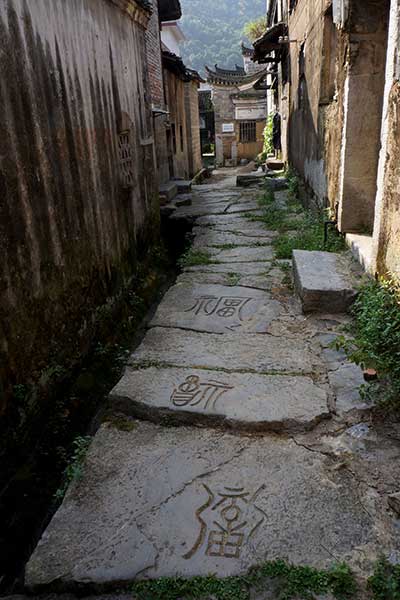Old glory paves way for new adventure
 0 Comment(s)
0 Comment(s) Print
Print E-mail China Daily, August 19, 2015
E-mail China Daily, August 19, 2015
|
A stone pathway with carved Chinese characters in Mochuan.[Photo by Huo Yan/China Daily] |
Older than the village and the tomb is a camphor tree with 14.65-meter-wide diameter, right at the entry of the village. It has a hole 12 meters wide that can fit a table seating 10 people for dinner. It's estimated the tree is more than 1,000 years old. Mochuan reached its peak in about 1810, its fortunes began to fall when the modern road system bypassed it. Changzhou, another village not far from Bangshang, was also a victim of modern transport systems. Around 200 years ago, the market in Changzhou would greet 2,000 people every day. Cloth, rice and charcoal were among the wide variety of merchandises that were traded. By 1949, the market was open only three days a week, drawing a mere 600 people.
Mochuan seems to be frozen in time, remnants of old streets and houses a gentle reminder of its erstwhile boom. Visitors who stop here may scratch their heads and wonder why a mountainous outpost once accommodated 80 restaurants on just one street. Nowadays, tourists may stumble upon the village by accident, drawn by its exceptional beauty, only discovering its fascinating history by chance. This is not a place to step off a tour bus and snap a few photos, but a museum, albeit not yet fully furnished, that contains many a lost tale of adventure and abundance.








Go to Forum >>0 Comment(s)